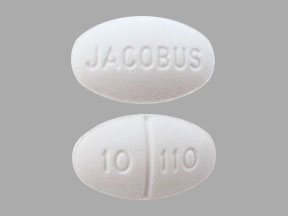Amifampridine Disease Interactions
There are 3 disease interactions with amifampridine.
Amifampridine (applies to amifampridine) seizures
Major Potential Hazard, Moderate plausibility.
Amifampridine is contraindicated in patients with a history of seizures. Seizures have been observed in patients without a history of seizures at the recommended doses. Seizures may be dose-dependent. Consider discontinuation or dose-reduction in patients who have a seizure while on treatment.
Amifampridine (applies to amifampridine) liver disease
Moderate Potential Hazard, Moderate plausibility.
Amifampridine is extensively metabolized by N-acetyltransferase 2 (NAT2) and hepatic impairment may cause an increase in exposure. The effects of amifampridine have not been studied in patients with hepatic impairment. It is recommended to start treatment with amifampridine in patients with any degree of hepatic impairment at the lowest recommended starting dosage (15 mg/day) and monitor for adverse reactions. Consider dosage modification or discontinuation in patients with hepatic impairment as clinically appropriate.
Amifampridine (applies to amifampridine) renal dysfunction
Moderate Potential Hazard, Moderate plausibility.
Renal clearance is an elimination pathway for amifampridine and the inactive metabolite, 3-N-acetyl amifampridine, and exposure of amifampridine is higher in subjects with renal impairment. Patients with renal impairment should be initiated at the lowest recommended starting dosage (15 mg/day), and patients should be closely monitored for adverse reactions. Consider dosage modification or discontinuation in patients with renal impairment as clinically appropriate. Caution is recommended as the safety, efficacy, and pharmacokinetics of amifampridine have not been studied in patients with end-stage renal disease. No dosage recommendation can be made for patients with end-stage renal disease.
Switch to professional interaction data
Amifampridine drug interactions
There are 202 drug interactions with amifampridine.
More about amifampridine
- amifampridine consumer information
- Check interactions
- Compare alternatives
- Reviews (6)
- Latest FDA alerts (1)
- Side effects
- Dosage information
- During pregnancy
- Drug class: cholinergic muscle stimulants
- Breastfeeding
- En español
Related treatment guides
Drug Interaction Classification
| Highly clinically significant. Avoid combinations; the risk of the interaction outweighs the benefit. | |
| Moderately clinically significant. Usually avoid combinations; use it only under special circumstances. | |
| Minimally clinically significant. Minimize risk; assess risk and consider an alternative drug, take steps to circumvent the interaction risk and/or institute a monitoring plan. | |
| No interaction information available. |
See also:
Further information
Always consult your healthcare provider to ensure the information displayed on this page applies to your personal circumstances.


